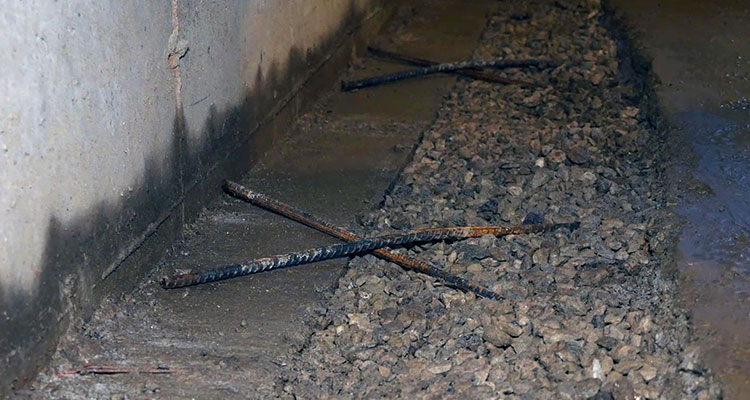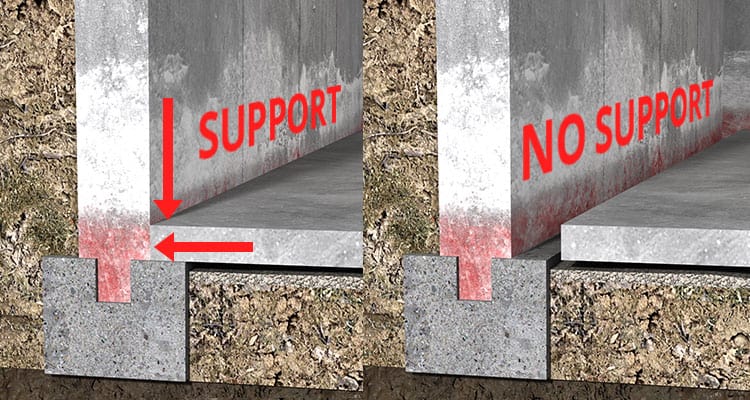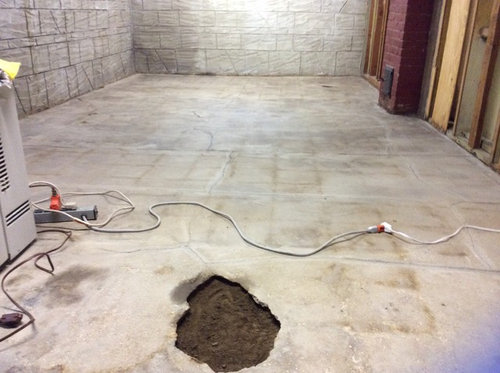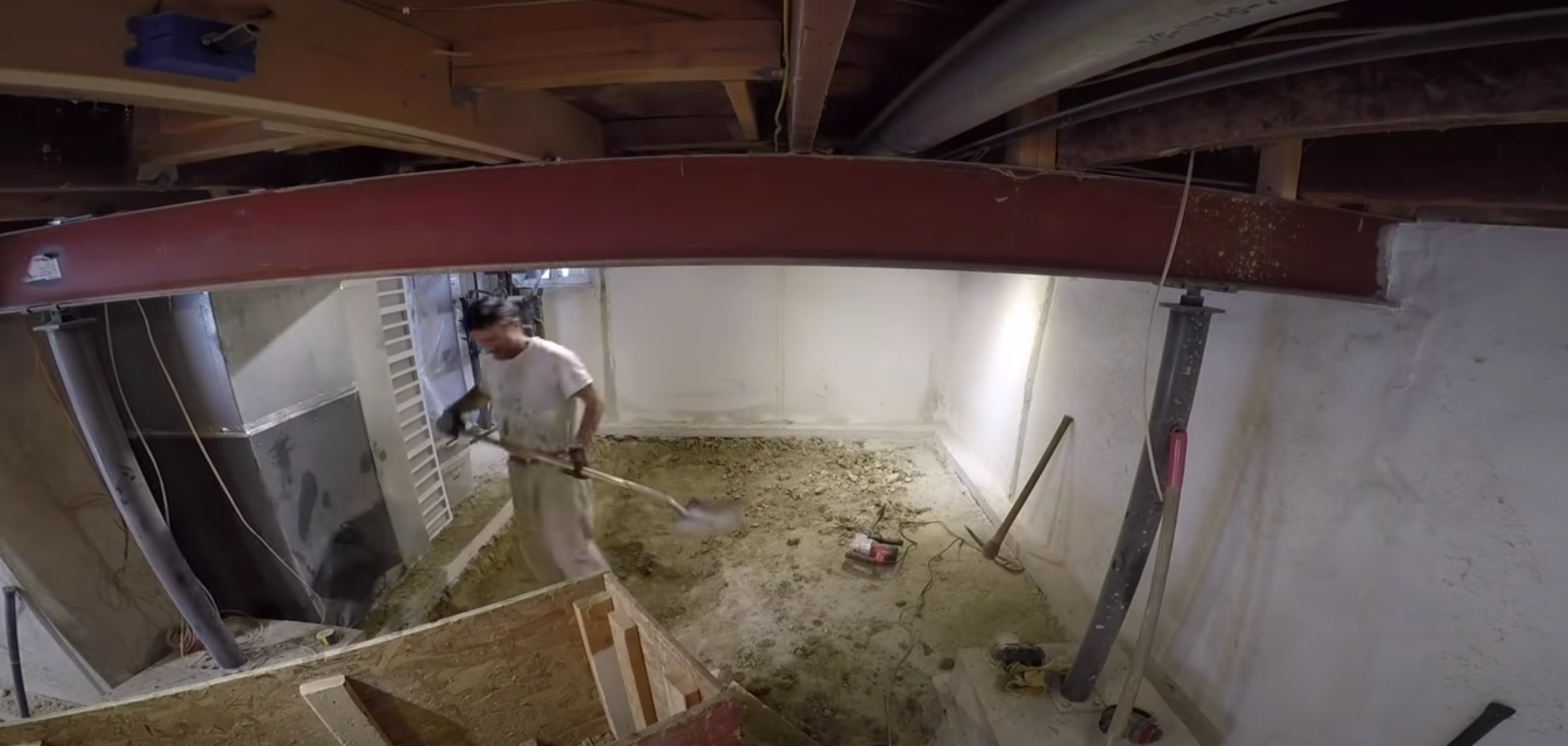Tools and Equipment Needed for Breaking Up Concrete Basement Floor
Breaking up a concrete basement floor requires the right tools and equipment to ensure a smooth and efficient process. By having the necessary tools at your disposal, you can tackle the job effectively and minimize potential damage. Let’s explore the essential tools and equipment needed for breaking up a concrete basement floor.
- Sledgehammer: A sledgehammer is a key tool for breaking up concrete. Its heavy head and long handle provide the necessary force to break through the tough material. Choose a sledgehammer with a weight that you can handle comfortably without compromising control.
- Jackhammer: For larger areas or more substantial concrete slabs, a jackhammer is a valuable tool. It uses a motor-driven hammering mechanism to deliver powerful blows, making it easier to break up the concrete. Renting a jackhammer is often more practical than purchasing one, especially for occasional use.
- Chisel and Pry Bar: A chisel and a pry bar are essential for removing smaller chunks of concrete. The chisel can be used to create cracks or weaken specific areas, while the pry bar helps lift and remove broken pieces. Opt for a sturdy chisel and pry bar that can withstand the force exerted during the process.
- Safety Gear: Prioritize your safety by wearing the right protective gear. This includes safety goggles to protect your eyes from flying debris, heavy-duty gloves to shield your hands, and a dust mask or respirator to prevent inhalation of harmful dust particles. Additionally, steel-toed boots protect your feet in case of accidental impacts.
- Wheelbarrow and Shovel: A wheelbarrow and shovel are indispensable for collecting and removing broken concrete. The wheelbarrow makes it easier to transport heavy loads, while the shovel helps with scooping and lifting the debris.

Safety Precautions to Take Before Breaking Up Concrete Basement Floor
Before embarking on the task of breaking up a concrete basement floor, it’s essential to prioritize safety. Taking the necessary precautions can minimize the risk of accidents or injuries during the process. Let’s discuss the important safety measures to consider before breaking up a concrete basement floor.
- Assess the Structural Integrity: Before starting any work, inspect the basement floor for any signs of structural weakness. Look for cracks, uneven areas, or indications of water damage. If you notice any concerning issues, consult a professional to assess the floor’s stability. It’s crucial to ensure that breaking up the concrete won’t compromise the structural integrity of the building.
- Turn off Utilities: To avoid potential hazards, locate and turn off all utilities connected to the basement, such as gas, water, and electricity. This step will prevent accidental damage to utility lines and ensure a safer working environment.
- Wear Protective Gear: Protective gear is vital to safeguard yourself during the concrete-breaking process. Wear safety goggles to shield your eyes from flying debris, heavy-duty gloves to protect your hands, and a dust mask or respirator to prevent inhalation of dust particles. Additionally, consider wearing knee pads to provide extra protection and comfort.
- Secure the Area: Clear the area surrounding the concrete basement floor to provide ample space for maneuvering and prevent tripping hazards. Remove any furniture, objects, or debris that may obstruct your work or cause accidents. It’s also a good idea to cordon off the work area to prevent unauthorized access.
- Inform Others: If you live with others or share the building with tenants, inform them about the concrete-breaking process. Advise them to stay clear of the basement area during the operation to ensure their safety. It’s essential to communicate and coordinate with others to minimize the risk of accidents.
How to Break Up Concrete Basement Floor
Breaking up a concrete basement floor can be a challenging task, but with the right approach and technique, it can be done efficiently. Follow this step-by-step guide on how to break up a concrete basement floor, ensuring a successful and manageable process.
- Prepare the Work Area: Clear the basement floor of any furniture, objects, or debris. Sweep the area to remove loose dirt and dust. Cover nearby walls and belongings with plastic sheets or drop cloths to protect them from debris and dust.
- Mark the Breaking Points: Use chalk or spray paint to mark the areas where you plan to break up the concrete. Create a grid pattern to divide the floor into manageable sections. This will help you work systematically and prevent unnecessary damage.
- Start with a Sledgehammer: Begin by using a sledgehammer to create cracks in the marked areas. Hold the sledgehammer with both hands and strike the concrete forcefully. Aim to create cracks that span the width of the section. Repeat this process along the marked lines.
- Switch to a Jackhammer: Once you have created cracks along the marked lines, switch to a jackhammer for more efficient concrete removal. Position the jackhammer at a slight angle and apply downward pressure to break up the concrete. Move the jackhammer back and forth in a controlled manner to continue breaking up the section.
- Remove Broken Concrete: As you break up the concrete, use a chisel and pry bar to lift and remove smaller chunks and debris. Place them in a wheelbarrow or other suitable container for disposal. Be cautious when handling heavy pieces of concrete and avoid overexertion to prevent injuries.
- Repeat the Process: Continue the process of creating cracks, using the sledgehammer, and breaking up the concrete with the jackhammer in each marked section. Take breaks as needed to rest and maintain your energy levels. Work systematically until the entire basement floor is broken up.
- Clean Up and Dispose of Debris: Once you have broken up the concrete, clean up the debris and dispose of it properly. Use a shovel to scoop the broken concrete into a wheelbarrow or other container. If the amount of debris is significant, consider renting a dumpster for disposal. Ensure compliance with local regulations for concrete disposal.
Dealing with Reinforcement and Rebar in Concrete Basement Floor
When breaking up a concrete basement floor, you may encounter reinforcement and rebar embedded within the concrete. Dealing with these elements requires special attention to ensure a safe and efficient process. Here is a guide on how to handle reinforcement and rebar when breaking up a concrete basement floor.
Identify Reinforcement and Rebar: Before starting the concrete-breaking process, carefully examine the floor to identify any reinforcement or rebar. Reinforcement can take the form of wire mesh, steel bars, or other materials that provide additional strength to the concrete. Use a flashlight and visually inspect the surface for any protruding or visible reinforcement.
Assess the Thickness and Position: Once you have identified the reinforcement or rebar, assess its thickness and position within the concrete. This information will help you determine the best approach for breaking up the concrete without damaging or dislodging the reinforcement. Reinforcement that is positioned closer to the surface may require more caution during the breaking process.
Modify Your Technique: When encountering reinforcement or rebar, it may be necessary to modify your breaking technique. Instead of directly striking the reinforcement with a sledgehammer or jackhammer, focus on breaking the surrounding concrete. Create cracks and weaken the concrete around the reinforcement, allowing for easier removal.
Use Appropriate Tools: In some cases, you may need specialized tools to cut or remove the reinforcement or rebar. Depending on the thickness and accessibility, options include bolt cutters, angle grinders with cutting discs, or hydraulic shears. These tools can help safely detach or cut through the reinforcement, allowing for its removal.
Exercise Caution: While dealing with reinforcement and rebar, exercise caution to prevent injuries or damage. Wear appropriate protective gear, such as heavy-duty gloves and safety goggles, to protect yourself from potential hazards. Take your time and work carefully to avoid damaging the reinforcement or causing unnecessary risks.
Dispose of Reinforcement and Rebar: Once the concrete is broken up and the reinforcement or rebar is exposed, carefully remove and dispose of it. Use appropriate tools to cut it into manageable pieces if necessary. Dispose of the reinforcement or rebar according to local regulations and guidelines for metal recycling or disposal.
Tips for Proper Disposal and Cleanup After Breaking Up Concrete Basement Floor
After successfully breaking up a concrete basement floor, proper disposal and cleanup are essential to ensure a tidy and safe environment. Here are some helpful tips for the proper disposal and cleanup process after breaking up a concrete basement floor.
Separate Debris: Separate the debris into different categories for easier disposal and recycling. Sort concrete chunks, rebar or reinforcement, and any other materials that may have been present within the concrete. This will facilitate recycling efforts and ensure compliance with local regulations.
Arrange for Disposal: Contact local waste management authorities to inquire about regulations and options for concrete disposal. They can guide proper disposal methods, such as renting a dumpster or arranging for a pick-up service. Ensure compliance with any weight or size restrictions to avoid additional charges or penalties.
Recycle Concrete: Consider recycling the broken concrete instead of sending it to a landfill. Many recycling facilities accept concrete for processing into reusable materials. Check with local recycling centers or construction waste recycling facilities to explore recycling options in your area.
Proper Disposal of Rebar and Reinforcement: If you have removed rebar or reinforcement from the concrete, dispose of it separately from the concrete debris. Contact local scrap metal recycling facilities to inquire about their acceptance and collection processes. They may require cutting the rebar into smaller pieces or bundling it for easier handling.
Clean Up Dust and Debris: Thoroughly clean the basement area after breaking up the concrete. Use a broom and dustpan to sweep up loose debris and dust. Consider using a wet vacuum or mop to further clean the floor and remove any remaining particles. This will help create a clean and safe environment.
Inspect for Damage: After the cleanup process, inspect the surrounding walls, plumbing, and other structures for any potential damage caused during the concrete-breaking process. Address any issues promptly to ensure the basement remains structurally sound.
Basement concrete floor repairs
Amazing Tips to Clean a Concrete Basement Floor Concrete
How to Cut Basement Floor (And Stop Concrete Dust)
Dig Out Basement – How to Dig Out and Finish Basement Video
Related Posts:
- Basement Floor Color Ideas
- Rubber Flooring For Basement
- How To Clear A Basement Floor Drain
- Basement Floor Covering Ideas
- Acid Wash Basement Floor
- Best Flooring For Concrete Basement Floor
- Insulation Under Basement Floor
- Stone Basement Floor
- Basement Floor Leveling Options
- Basement Flooring Options Inexpensive







